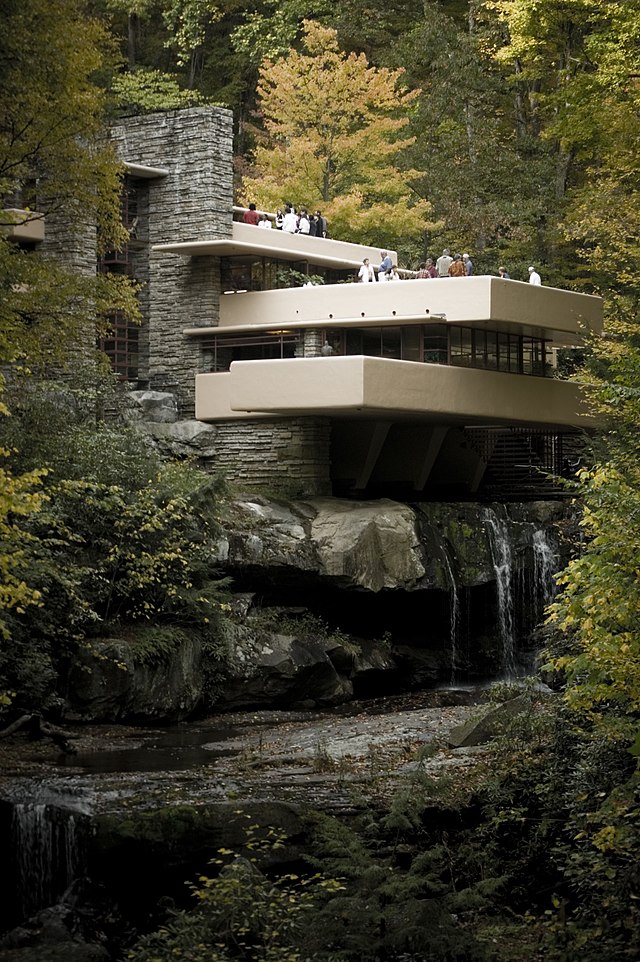Modernism
movement of art, culture, philosophy and architecture From Wikipedia, the free encyclopedia
Remove ads
Modernism is an art movement together with a philosophical movement and a religious movement. It came from big changes in Western society during the late 19th and early 20th centuries.



Modernism was a cultural movement of the late 19th century to the mid-20th century. It was a philosophy and it was also an art movement. It changed art, literature, music, architecture and drama.[1]
Modernism rejected tradition. It was interested in new ways of doing old things. Also, there was a belief that science and technology could change the world for the better.[2]The term covers some movements that are somewhat contradictory.[3]
Some scholars think that modernism is (going on, or) continuing into the 21st century. Others see it (changing or) evolving into late modernism or high modernism.[4]
Remove ads
Art
Modern art replaced classical art. It included abstract art, cubism, pop art, minimalism, and Dadaism. It affected sculpture quite strongly, though at the beginning sculptors like Rodin and Epstein made both traditional and modernist works.
There are different ideas about the start of modernism in painting. One idea is that the start was in 1885–1886 with Georges Seurat's painting A Sunday Afternoon on the Island of La Grande Jatte (picture);[5] Historian William Everdell is known for having that idea. That painter put many small dots on his paintings; The many dots made up [each of those] paintings; This way of painting; has the name Divisionism.
Wassily Kandinsky started to make expressionist paintings in 1903. Other important events of modernism were the following:
- his first abstract painting
- the founding of the Blue Rider group in Munich in 1911
- the rise of fauvism
- the inventions of cubism from the studios of Henri Matisse, Pablo Picasso, Georges Braque, and others between 1900 and 1910.
Henry Moore is one of the most famous modernist sculptors.
Typical modernist painters were Picasso, Braque, Matisse, Kandinsky, and Mondrian.
Remove ads
Music
Composers such as Stravinsky, George Antheil and Schoenberg are modernists. Stravinsky's The Rite of Spring (Le Sacre du Printemps) is a landmark work.
Dance
Ballets such as The Rite of Spring and Les Noces (The Wedding) mark the arrival of modernism into this traditional dance form. Modern dance outside of ballet started with Isadora Duncan, Loie Fuller and Ruth St. Denis.
Literature
James Joyce's Ulysses is the classic example of modernism in the novel. Ulysses (1922) has been called "a demonstration and summation of the entire Modernist movement".[6] Franz Kafka's The Metamorphosis (1915), The Trial (1925) and T.S. Eliot's poem The Waste Land (1922) are also prime examples. Looking back, it is clear that: Fyodor Dostoyevsky's Crime and Punishment (1866) had a great influence on other writers.
The arrival of magic realism is part of modernism. The novels and short stories of Mikhail Bulgakov such as Diabolidad and The Master and Margarita are examples.
Remove ads
Architecture

Modernism in architecture is found in the work of Frank Lloyd Wright, Le Corbusier, Walter Gropius the founder of Bauhaus, and Mies van der Rohe. Le Corbusier's famous remark "A building is a machine for living in" shows how different his thinking was to architects of the 19th century. The skyscraper, such as Mies van der Rohe's Seagram Building in New York (1956–1958), became the archetypal modernist building.

Remove ads
Criticism
A criticism of the modern movement is that it does not value tradition, and goes in for change for the sake of change. What modernists want most is freedom of expression or perhaps freedom of experimentation and so many modern paintings avoid making visual copies of real things. In modernist literature, an author may leave out plots or narrative or characterization in books.
The experiments were not random. They drew on the ideas of their day: mass media, science and technology, Marxism, Freudian psychology, and so on. There was a general search for new materials, new methods and new ideas. There was often a rejection of elitism, and a love of populism and popular culture.
Another criticism was of the connection between modernism and socialism. Certainly many modernists were also socialists. In the early days of socialism it seemed to offer hope of a new future without the baggage of the past. That also explains their rejection of tradition.
Remove ads
References
Related pages
Wikiwand - on
Seamless Wikipedia browsing. On steroids.
Remove ads
